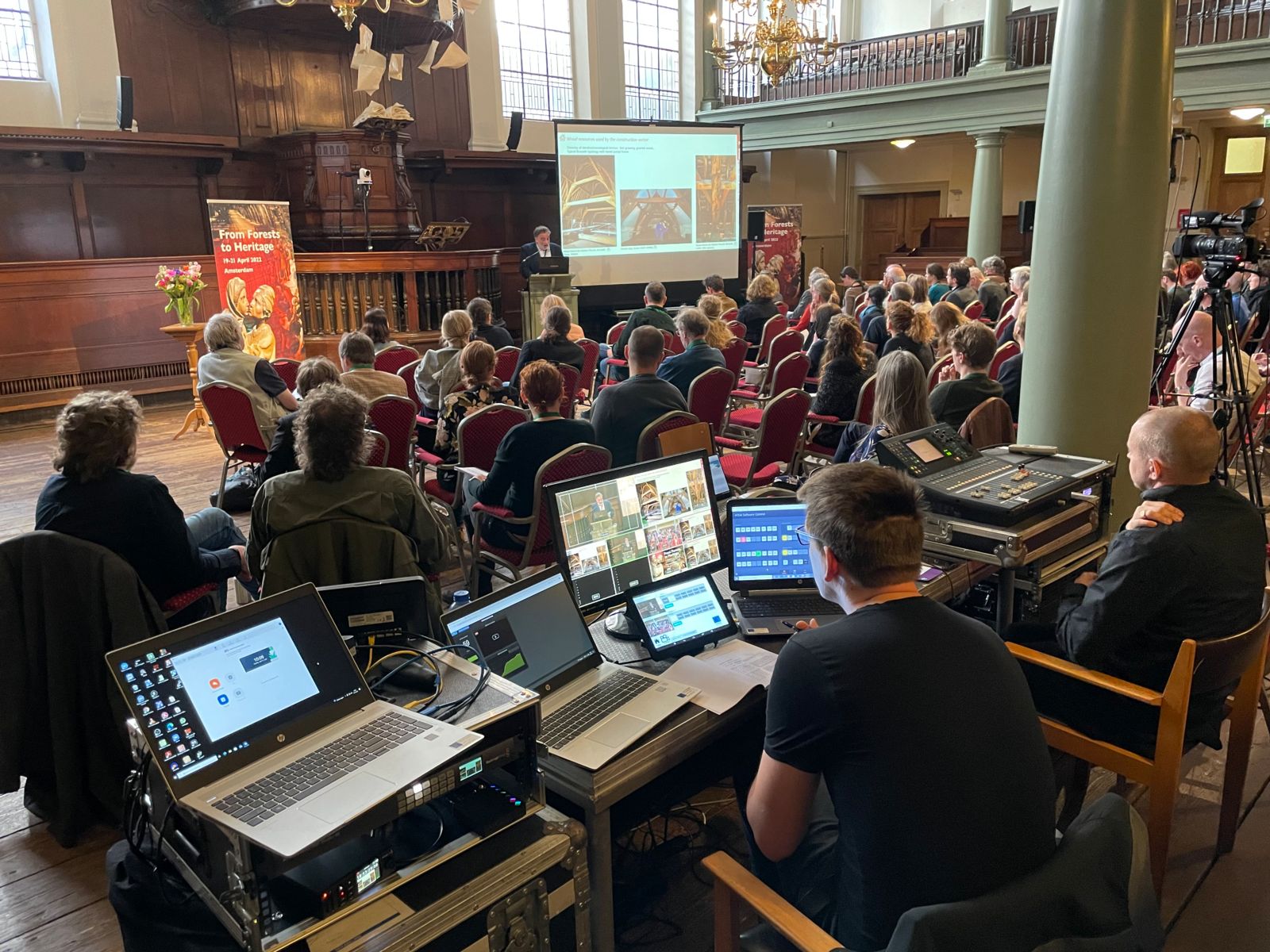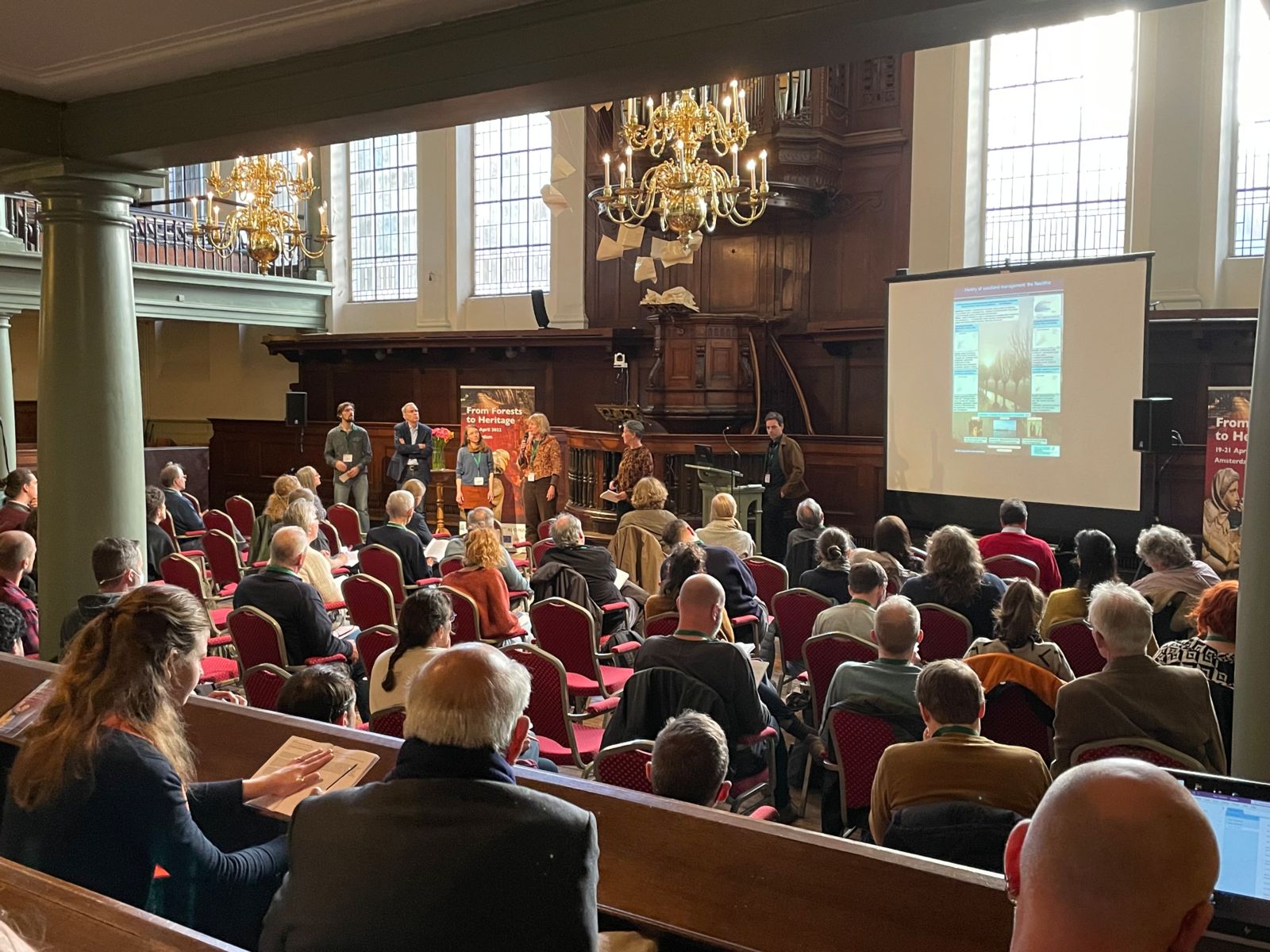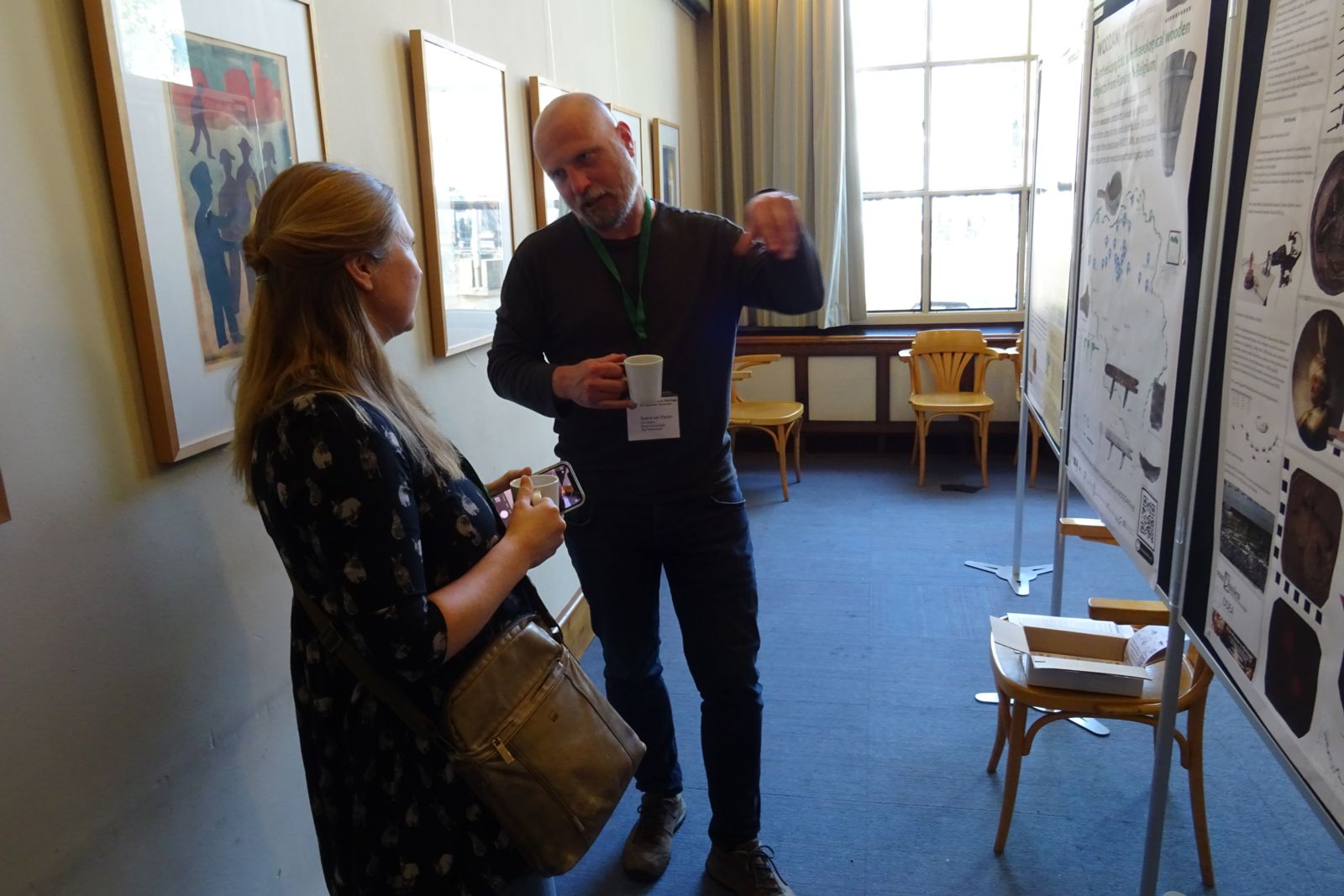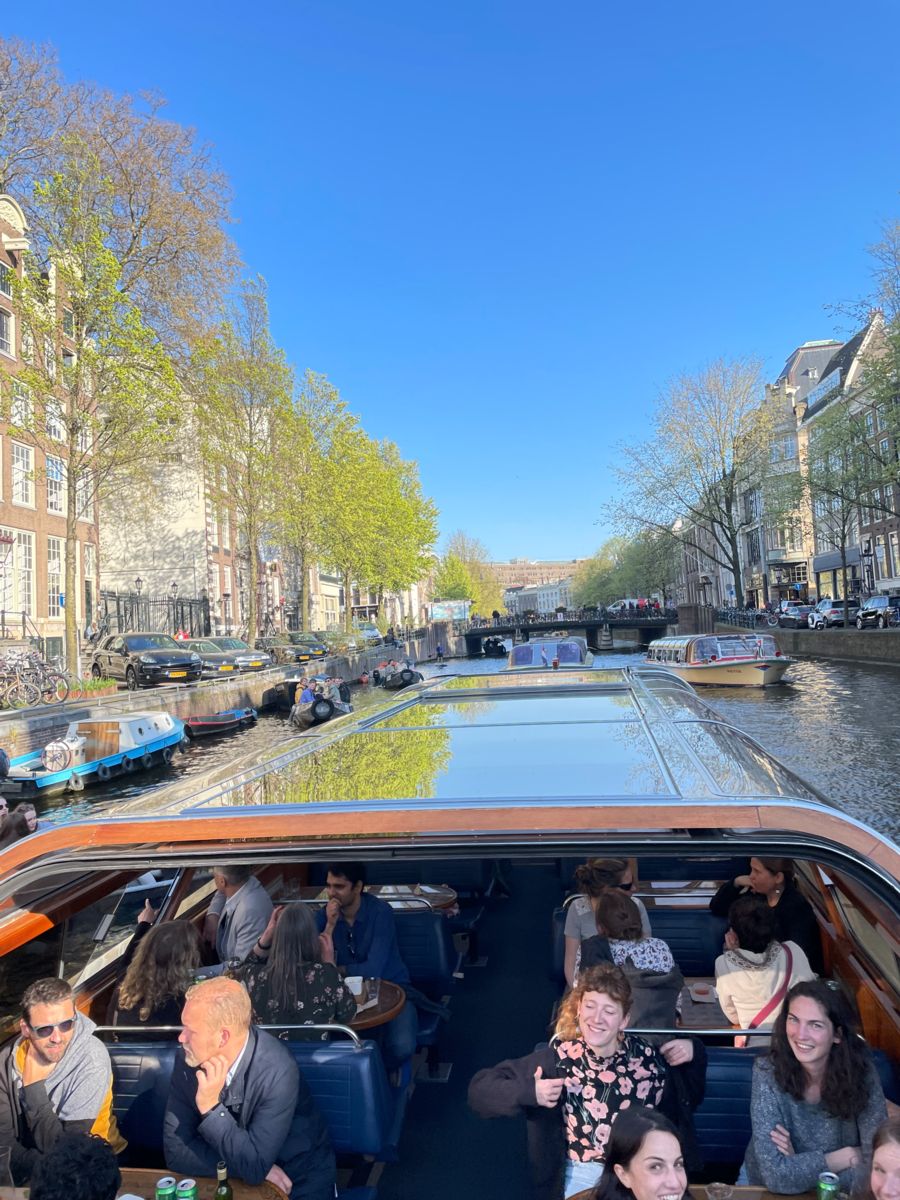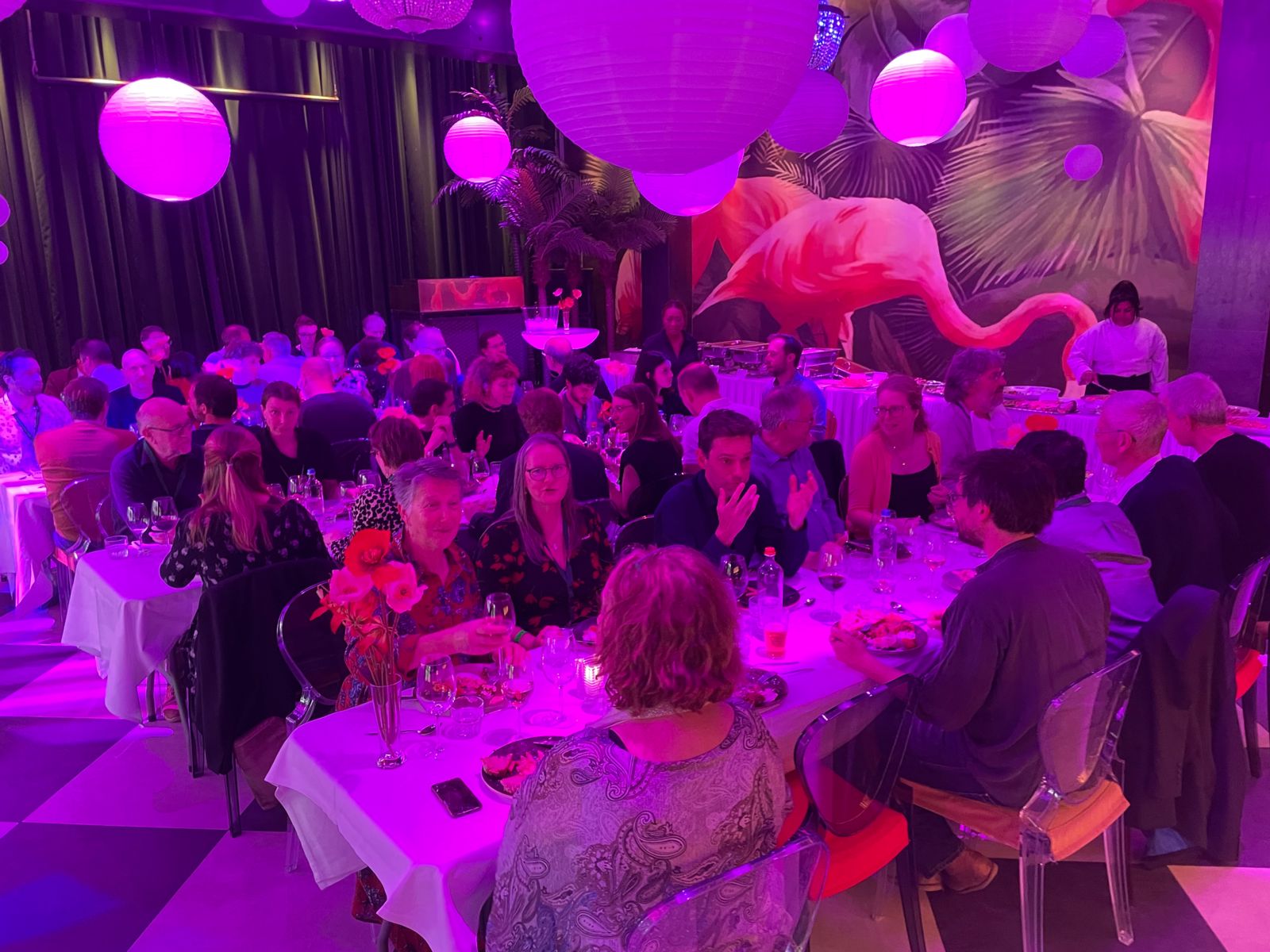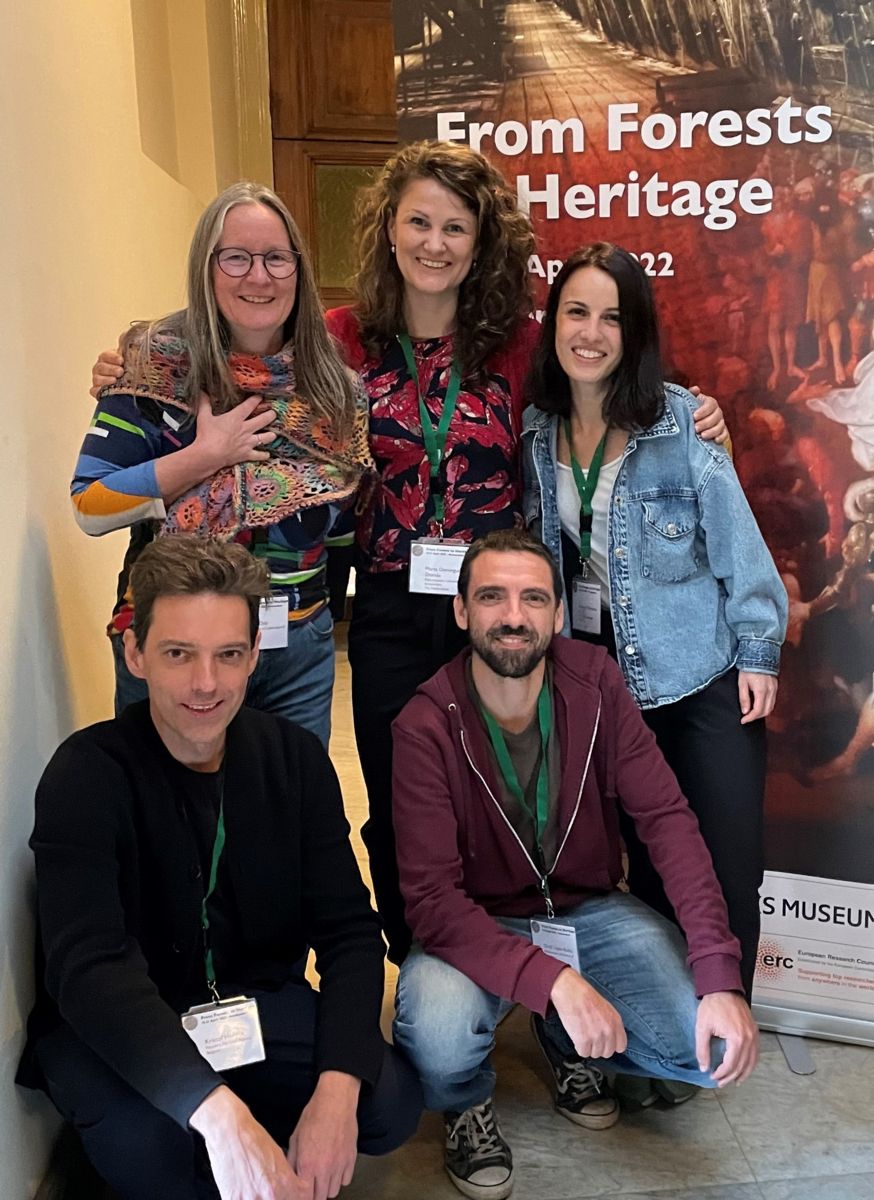From Forests to Heritage
Symposium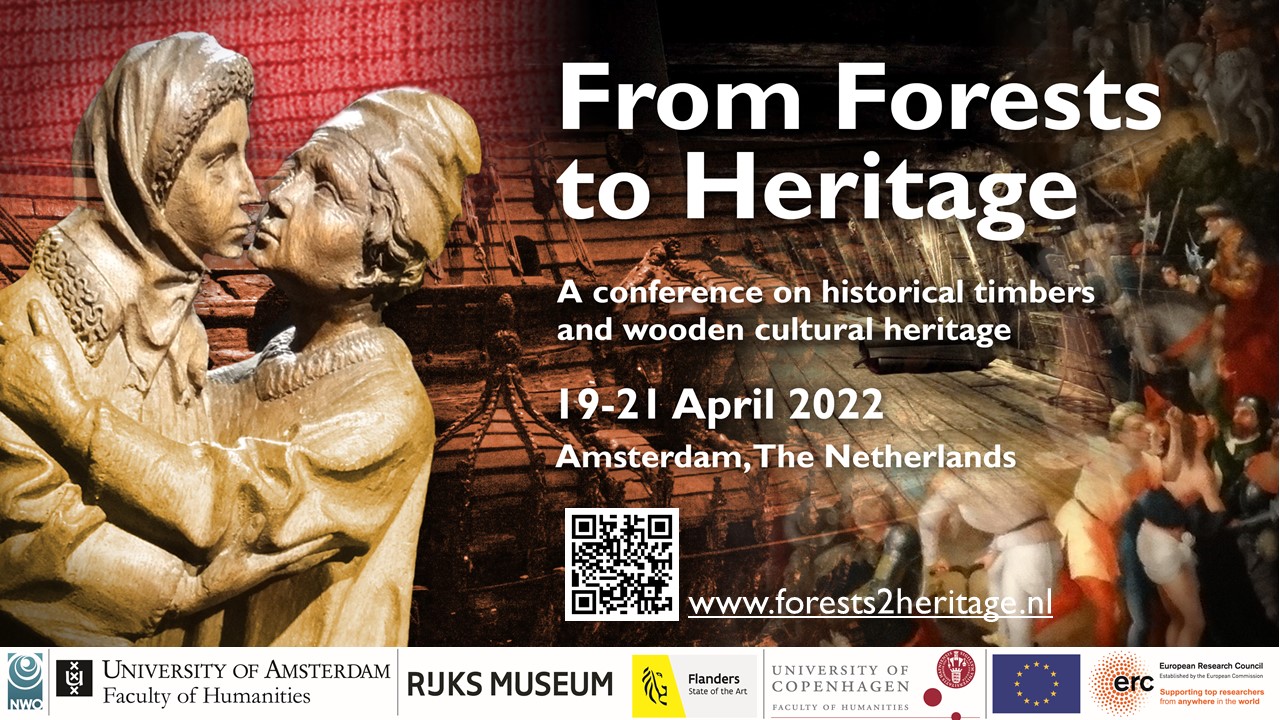
From Forests to Heritage conference
Three days dedicated to wood in Cultural Heritage
Marta Domínguez-Delmás, Aoife Daly and Kristof Haneca
The From Forests to Heritage conference, held in Amsterdam from 19 to 21 April 2022 (www.forests2heritage.nl), brought together scientists and practitioners working on different aspects related to wood in cultural heritage contexts. The 17th century Doopsgezinde kerk, a church hidden inside a historic building between two of the most beautiful canals of Amsterdam (Singel and Herengracht), was the perfect setting to host our conference, from the icebreaker on 18 April to the closing discussion on the 21st.
.jpg)
With 102 delegates on site and 287 registered online, the conference reached a large audience, reflecting the great interest generated by the conference topic. The 86 contributions (52 oral on-site lectures, 11 pre-recorded and 23 posters) covered very diverse topics within the seven themes proposed and represented a wide geographical and temporal range. While some presentations touched on exciting results obtained through well-established methods, others showcased cutting-edge techniques for non-invasive research and wood-provenancing analyses. Hot controversial topics were also addressed.
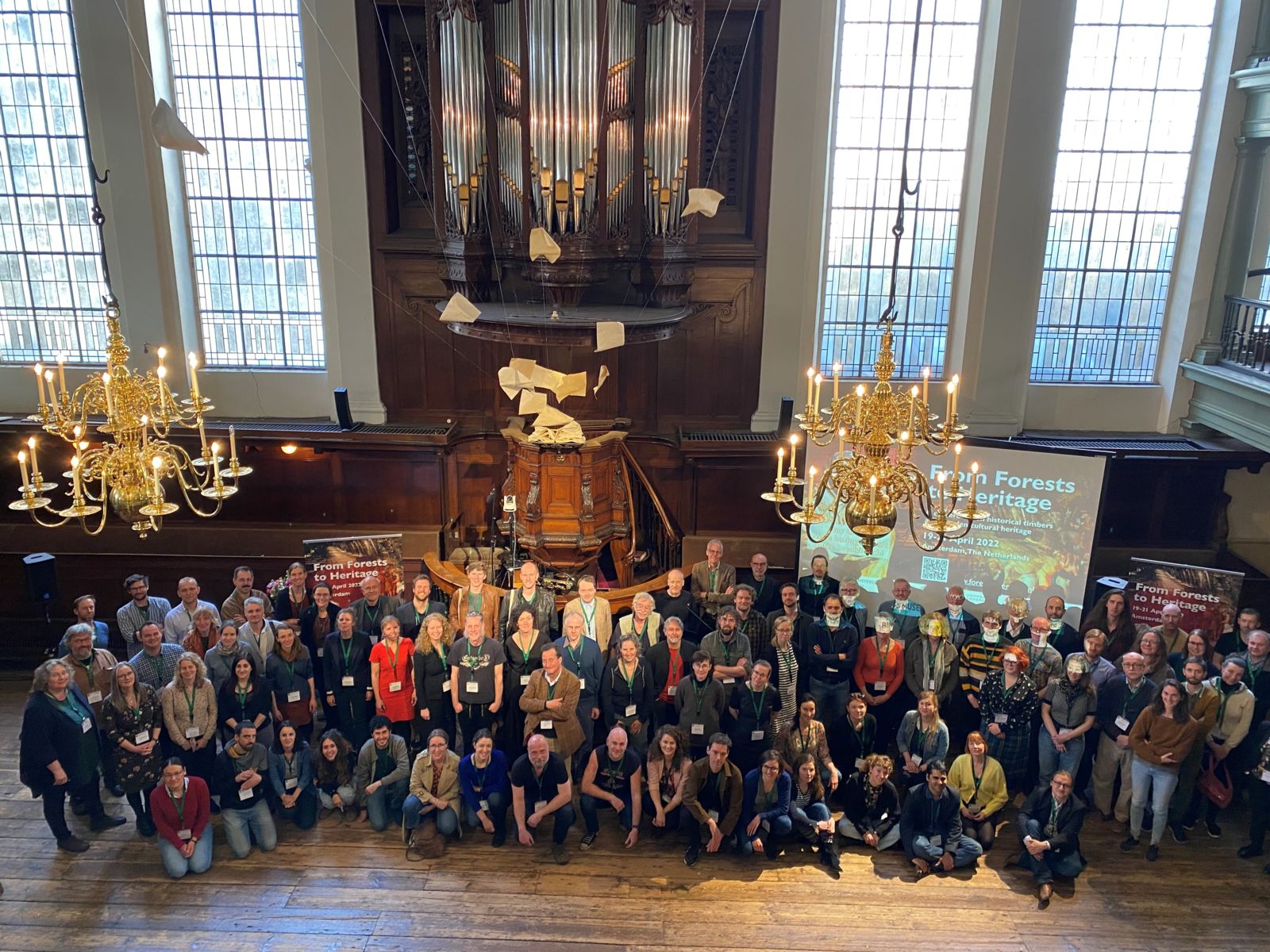
The session Built Heritage showcased studies on built structures dating from the last millennium in the Netherlands, Belgium, Austria, Czech Republic, Ukraine, Lithuania, Finland and Sweden. Furthermore, one lecture presented the diversity and chronology of apotropaic symbols in English buildings, and another one illustrated how wood samples from historical timber constructions allowed multi-millennia long chronologies of hinoki cypress in Japan to be developed. Some posters addressed the historical use and selection of wood for buildings, or presented methodological approaches to wood identification.
The session Shipwrecks and archaeological structures was particularly rich in its diversity of topics, geography and periods (from the Iron Age, through Roman times and Middle Ages up until the Early Modern Period). Lectures and posters presented research on Scottish crannogs, archaeological structures in England, Sweden and Finland, shipwrecks in the Netherlands, Argentina and Germany, barrels from a shipwreck in Sweden, a medieval mill excavated in Germany, as well as microscopy techniques to study waterlogged wood, and tree-ring network analyses for timber provenance.
The session dedicated to furniture and works of art brought our attention to ethnographic objects from Panama, and diverse items from museum collections, ranging from panel paintings and sculptures to musical instruments, spectacular cabinets and ship models. It was illustrated how research on wood species composition and tree-ring analysis allows researchers to support or reject hypothesis on provenance, construction details and authenticity. Some contributions advertised online repositories and databases where information on archaeological wooden objects or tree-ring data on panel paintings and sculpture can be found and queried.
Forest history might not be the first topic that comes to mind when studying wooden cultural heritage. However, harvesting wood from forested areas for producing wooden artefacts and structures inevitably altered landscapes and woodlands in the past. During this session conference delegates were given an overview of changes in forest management and composition, from Scandinavia and down south to the Mediterranean region, triggered by exploitations related to large-scale architectural projects, railroad constructions or charcoal production. Both anthracological analysis on Neolithic wood fragments and tree-ring studies on timbers from a tree-less environment as Greenland exemplified that the acquisition of wood and access to timber resources was key, throughout human history.
One of the largest sessions of the conference was dedicated to Evidence of timber trade and transport. High-level presentations demonstrated how important historical timber trade and access to sustainable wood resources was for past (and current) societies. This was exemplified with provenance case-studies on material dating from the Roman era up to the Modern period, from mountainous regions to the lowlands of Europe. Furthermore, some of the presentations made it clear not only that tree-ring analysis helps us to further document past trade in wood products, but also that isotope and aDNA analyses, meticulous recording of tool traces and forest marks, or detailed interpretation of engraved markings of ownership, complement and support tree-ring studies.
The Non-invasive techniques for the study of wooden cultural heritage session was highly focussed on the latest developments in X-ray computed tomography as a toolset for the study of wooden cultural heritage. Oral communications and posters illustrated that this technology is employed not only for tree-ring dating of compound objects (musical instruments, chests, …) or monolith wooden sculptures, but also for wood species identification of ethnographical objects in a non-invasive way. A number of dedicated scanning setups for cultural heritage objects have now been devised and engineered over the past few years, but also industrial scanners are playing an important role in the examination of wooden objects, both for tree-ring analysis or to reveal construction details.
Novel methods for dating and provenance analysis showcased the state-of-the-art in wood dating and provenancing. The latest advances in dating through measuring stable oxygen isotopes in tree rings and high-resolution radiocarbon analyses were presented, including the initial discovery and the subsequent findings of radiocarbon spikes by Dr. Fusa Miyake. Provenancing through multiproxy approaches involving ring-width series, wood anatomy, wood-density records (MXD), stable hydrogen and strontium isotopes was key in studies from Switzerland, Germany and France. Furthermore, aDNA analyses was confronted with tree-ring based provenance analysis, leading to an intense but very constructive and highly appreciated discussion.
The last presentation before the general discussion was reserved to Dr. Brita Lorentzen (Cornell University) who raised awareness about the illegal trade of wooden art objects, and the need to define best practices for the acceptance of commissions by laboratories providing dendrochronological dating services. Such laboratories can unwillingly become tools for the validation of wooden artifacts of dubious provenance, and Dr. Lorentzen proposed the adoption of guidelines that can aid laboratories against the misuse of their expertise. Editorial boards of scientific journals can play an important role in this too by explicitly imposing ethical requirements towards the heritage objects presented in studies awaiting publication.
The general discussion addressed several topics that had been raised throughout the different sessions. Thanks to the hybrid format of the conference, participants that presented remotely were able to join this discussion as well. The (mis)use of scientific results (radiocarbon or dendrochronological dating, DNA provenance analyses, etc.) were debated. The long-term preservation of wooden samples - especially for waterlogged archaeological material - was another topic of concern. Furthermore, given the recent advances in non-invasive scanning techniques – as shown by many of the presenters – the question was raised of whether collection curators will still allow hands-on research on works of art and ethnographic objects in the future. During this discussion, wood specialists indicated that hands-on research is still an important requirement, as even the most advanced, novel techniques do have limitations and certain preconditions.
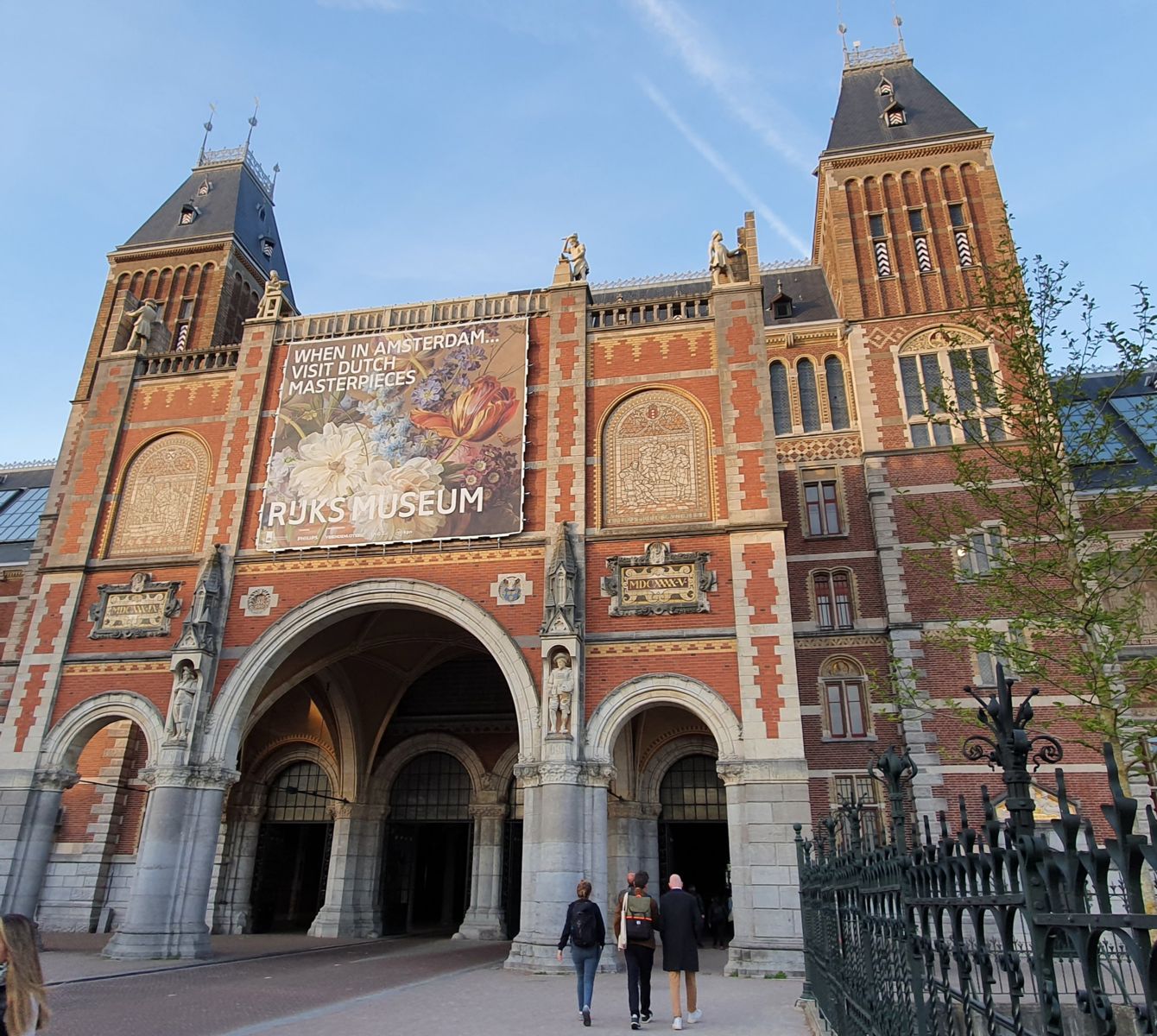
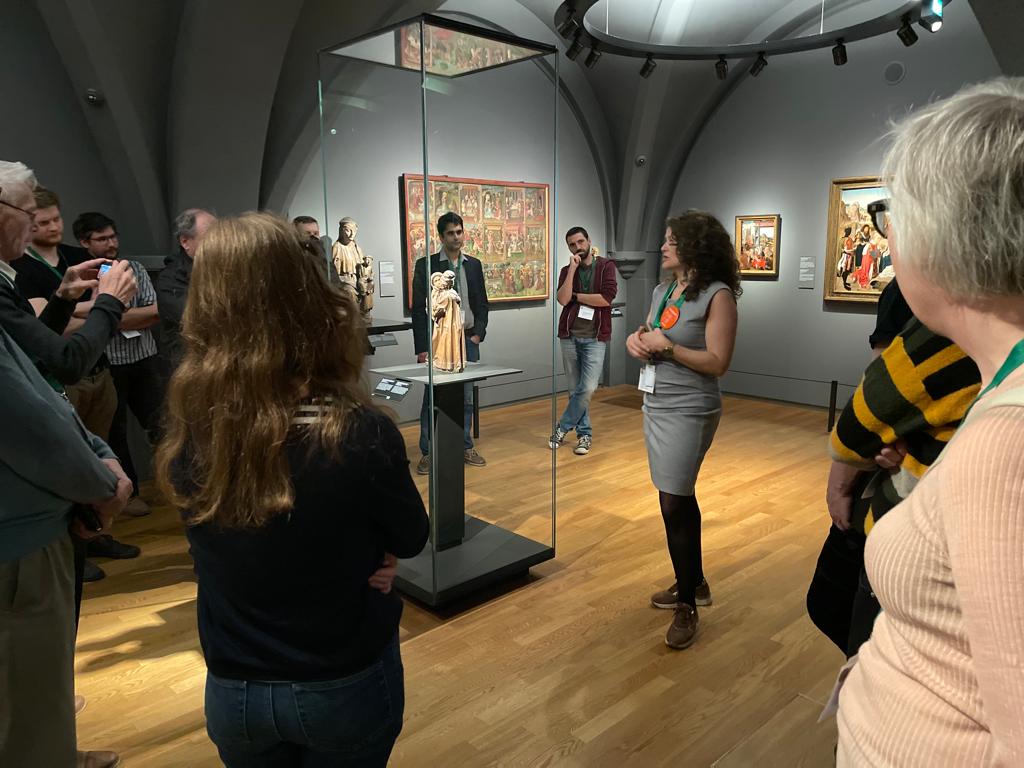
Besides the scientific programme, the conference was designed to facilitate scientific exchange and networking. Our social programme provided conference delegates the time and space to meet, socialise and network, while getting acquainted with the history of Amsterdam and the Low Countries, a major European timber-trade hub from the 15th to the 18th centuries. During the icebreaker on Monday 18, attendees were able to meet and greet, and the first posters were hung. On Tuesday 19, we were welcomed at the Rijksmuseum, where tours around the Middle Ages and Renaissance galleries and the conservation ateliers were organised. Conservators and scientists told us about the historic use of wood for artworks and the techniques employed at the Science and Conservation department to research and restore museum objects. This day closed with a reception offered at the Ateliergebouw (conservation headquarters) of the Rijksmuseum. On Wednesday 20, a boat tour through the canals of Amsterdam gave participants a different perspective of the city’s history and architecture. On Thursday 21, the conference closed with a social dinner.
The Association for Tree-ring Research (ATR) supported the event advertising it on their website, and kindly granted two 250€ travel bursaries to PhD researchers Roberta d’Andrea and Manuel Broich.
All in all, From Forests to Heritage was a great experience for everyone. We thank all the delegates again for their warm response to our call, and now only hope that a second edition, as fruitful as this one, follows suit elsewhere in 2024. We will be delighted to attend!

